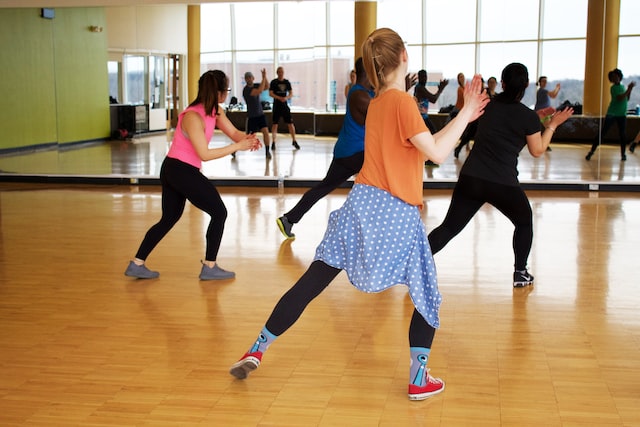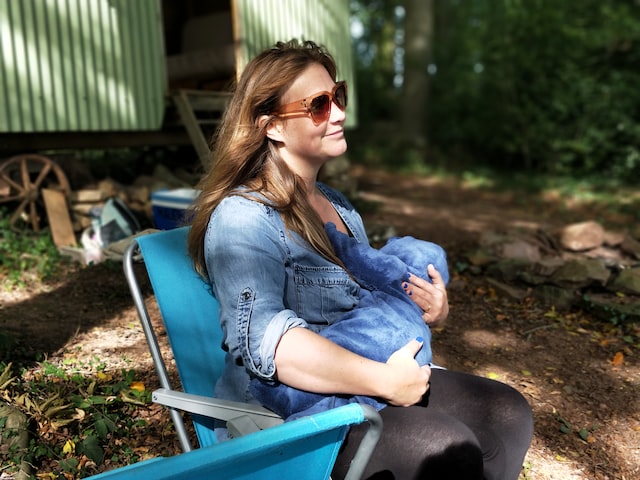Basic Hair Care Tips and Tricks
Basic Hair Care Tips
Hair is an essential part of your appearance, and it can have a significant impact on your overall appearance and personality. Many women consider their hair to be one of their most important features, and it can play a crucial role in enhancing their confidence and self-esteem.
Related:- Home Remedies to Get Rid of Dandruff Naturally
Beautiful hair can make you feel more feminine, attractive, and self-assured. When you feel good about your hair, you are more likely to feel confident in your appearance and project that confidence to others. As a result, having healthy, beautiful hair can help you feel more empowered and in control of life.
Basic Hair Care Tips and Tricks

Additionally, your hair can also be a reflection of your personality. Different hairstyles can communicate different things about you, from edgy and daring to classic and elegant. How you choose to style your hair can give others a glimpse into your personality and individual style. Here in this article, I will guide you about basic hair care tips and tricks for natural shine and beauty.
Tips for Washing Fair
Brush your hair before washing: This will help to detangle any knots and distribute natural oils throughout your hair, making it easier to wash and preventing unnecessary breakage.
Rinse your hair thoroughly with warm water: This helps to open up your hair cuticles, allowing shampoo and conditioner to penetrate your hair more effectively.
Choose the right shampoo: Depending on your hair type and concerns, choose a shampoo that suits your needs. If you have dry hair, look for a moisturizing shampoo. If you have oily hair, look for a clarifying shampoo.
Use the right amount of shampoo: A quarter-sized amount of shampoo is usually enough, but you may need more if you have long or thick hair. Don’t use too much shampoo as it can strip your hair of its natural oils.
Massage your scalp: Using your fingertips, gently massage your scalp in circular motions. This helps to increase blood flow and promote hair growth.
Rinse thoroughly: Make sure to rinse your hair thoroughly to remove all shampoo residue.
Condition your hair: Apply conditioner to the lengths and ends of your hair. Leave it on for a few minutes before rinsing it off. This will help to moisturize and detangle your hair.
Don’t wash your hair every day: Washing your hair every day can strip it of its natural oils and cause damage. Try to wash your hair every other day or every few days, depending on your hair type and how oily it gets.
Pat your hair dry: Don’t rub your hair with a towel as it can cause damage and breakage. Instead, gently pat your hair dry with a towel.
Use a wide-toothed comb: After washing, use a wide-toothed comb to detangle your hair. Start from the end and work your way up to prevent breakage.
Tips for Drying Hair
Gently squeeze out excess water: After washing your hair, gently squeeze out excess water using a towel. Avoid rubbing your hair vigorously with a towel, as this can cause damage and breakage.
Don’t use a hairdryer on high heat: High heat can damage your hair and make it prone to breakage. Instead, use a hairdryer on a medium or low heat setting.
Keep the hairdryer at a safe distance: Hold the hairdryer at least 6 inches away from your hair to prevent heat damage.
Use a heat protectant: Apply a heat protectant spray or serum before blow-drying to protect your hair from heat damage.
Use a wide-toothed comb: Comb your hair gently with a wide-toothed comb while blow-drying. This will help to prevent tangles and reduce breakage.
Don’t over-dry your hair: Over-drying your hair can cause damage and make it frizzy. Stop blow-drying when your hair is almost dry and let it air dry the rest of the way.
Avoid brushing wet hair: Wet hair is more prone to breakage, so avoid brushing it when it’s wet. If you need to detangle your hair, use a wide-toothed comb instead.
Use a microfiber towel: Microfiber towels are gentler on your hair than regular towels and can help to reduce frizz.
Consider air-drying: If possible, consider air-drying your hair instead of blow-drying it. This can help to reduce heat damage and keep your hair healthy.
Don’t tie your hair up when it’s wet: Wet hair is more prone to breakage, so avoid tying it up until it’s completely dry.
Tips for Bruising Hair
Use a brush with soft bristles: Choose a brush with soft bristles to prevent damage and breakage. Avoid using a brush with hard or metal bristles as they can cause damage to your hair and scalp.
Brush from the bottom up: Start brushing from the ends of your hair and work your way up to prevent tangles and breakage.
Use a detangling spray: If your hair is prone to tangles, use a detangling spray before brushing to make it easier to comb through.
Don’t brush your hair when it’s wet: Wet hair is more prone to breakage, so avoid brushing it when it’s wet. Instead, use a wide-toothed comb to detangle your hair.
Brush in sections: Divide your hair into sections and brush each section separately. This will help to prevent tangles and ensure that you brush all of your hair.
Be gentle: Brush your hair gently to prevent damage and breakage. Avoid pulling or tugging at your hair, especially when it’s tangled.
Don’t brush your hair too often: Over-brushing your hair can cause damage and breakage. Brush your hair only when necessary and avoid brushing it excessively.
Avoid brushing your hair too vigorously: Vigorous brushing can damage your hair and scalp. Use gentle, slow strokes to brush your hair.
Clean your brush regularly: Clean your brush regularly to remove any dirt, oil, or hair products that may have accumulated on it. This will help to keep your brush hygienic and prevent it from damaging your hair.
Use a comb for styling: If you need to style your hair, use a comb instead of a brush. Combs are gentler on your hair and can help to prevent damage and breakage.
TIPS FOR HEAT STYLING HAIR
Use a heat protectant: Apply a heat protectant product to your hair before using any heat styling tools. This will help to prevent heat damage and keep your hair healthy.
Don’t use heat styling tools on wet hair: Heat styling tools can cause damage to wet hair, so make sure your hair is completely dry before using them.
Use the right temperature setting: Use the lowest temperature setting that still achieves the desired results. High heat can damage your hair and cause breakage.
Section your hair: Divide your hair into sections and style each section separately. This will help to ensure that you style all of your hair evenly and prevent tangles.
Don’t leave heat-styling tools in one place for too long: Move the heat-styling tool continuously through your hair to avoid overheating and damaging your hair.
Use a good quality heat styling tool: Invest in a good quality heat styling tool that distributes heat evenly and has temperature control features.
Don’t use heat styling tools every day: Overuse of heat styling tools can cause damage and breakage to your hair. Try to limit heat styling to 2-3 times per week.
Don’t use heat styling tools on damaged hair: If your hair is already damaged or prone to breakage, avoid using heat styling tools on it.
Use a leave-in conditioner: After heat-styling your hair, apply a leave-in conditioner to help prevent damage and keep your hair healthy.
Take breaks between heat styling: Give your hair a break from heat styling every once in a while. This will help to prevent damage and give your hair time to recover.
Tips To Protect Hair from the Sun and Pollution
Wear a hat or scarf: Cover your head with a hat or scarf to protect your hair from direct sunlight and pollution. This will also help to prevent your scalp from getting sunburned.
Use a leave-in conditioner: Apply a leave-in conditioner or hair serum to protect your hair from the sun and pollution. Look for products that contain UV filters and antioxidants, which can help to protect your hair from damage.
Rinse your hair with cold water: After being exposed to the sun and pollution, rinse your hair with cold water. This will help to remove any dirt or pollutants that may have accumulated on your hair.
Use a clarifying shampoo: Use a clarifying shampoo once a week to remove any build-up of pollutants or styling products that may have accumulated on your hair.
Avoid using too many hair styling products: Hair styling products can attract pollutants and cause build-up on your hair, making it more vulnerable to damage. Use hair styling products sparingly, and make sure to wash them out of your hair regularly.
Keep your hair clean: Wash your hair regularly to remove any pollutants that may have accumulated on your hair. Use a gentle shampoo that is suitable for your hair type.
Don’t leave your hair open for too long: Avoid leaving your hair open for too long in polluted areas. Tie it up or cover it with a scarf to protect it from pollution.
Use a hair mask: Use a hair mask once a week to nourish and protect your hair from damage. Look for hair masks that contain natural ingredients like coconut oil, avocado, or honey, which can help to hydrate and protect your hair.
Avoid swimming in chlorinated water: Chlorine can damage your hair, making it more vulnerable to sun and pollution damage. If you need to swim in chlorinated water, wear a swim cap or rinse your hair with clean water immediately after swimming.
Eat a healthy diet: A healthy diet can help to nourish your hair from the inside out. Eat foods that are rich in vitamins and antioxidants, like fruits, vegetables, nuts, and seeds.
Tips for Hair Care in the Night
Brush your hair before bed: Brushing your hair before bed can help to distribute natural oils from your scalp throughout your hair, which can help to keep it hydrated and nourished.
Tie your hair up: Tying your hair up in a loose bun or braid can help to prevent tangles and breakage while you sleep. Use a soft scrunchie or hair tie to avoid creating creases or pulling on your hair.
Use a silk or satin pillowcase: Sleeping on a silk or satin pillowcase can help to prevent tangles and breakage, as well as keep your hair looking smooth and shiny.
Apply a hair mask: Applying a hair mask before bed can help to deeply hydrate and nourish your hair while you sleep. Look for a hair mask that is suitable for your hair type and leave it on overnight for best results.
Use a leave-in conditioner: Applying a leave-in conditioner or hair serum before bed can help to protect and nourish your hair while you sleep. Look for a product that is suitable for your hair type and apply it evenly throughout your hair.
Don’t sleep with wet hair: Sleeping with wet hair can cause breakage and damage to your hair. Make sure to fully dry your hair before going to bed or use a hair dryer on a low heat setting to speed up the process.
Avoid using heat styling tools before bed: Using heat styling tools like flat irons or curling irons before bed can cause damage to your hair. Try to avoid using these tools before bed, and opt for more gentle styling methods like braiding or twisting your hair instead.
Protect your hair from rubbing against your pillow: Rubbing your hair against your pillow can cause friction and damage. Try tying your hair up or using a silk or satin pillowcase to prevent this.
Keep your hair clean: Make sure to wash your hair regularly to remove any dirt or oils that may have accumulated on your hair during the day. This can help to keep your hair healthy and prevent breakage.
Get enough sleep: Getting enough sleep is important for your overall health, including the health of your hair. Make sure to get a good night’s sleep to help your body repair and regenerate your hair while you rest.
Natural Treatments for Nourishing
Coconut oil treatment: Coconut oil is an excellent natural hair conditioner that can help to moisturize and nourish your hair.
- Warm up a small amount of coconut oil in your hands until it’s melted.
- Apply the coconut oil to your hair, focusing on the ends and any dry or damaged areas.
- Use your fingers or a wide-toothed comb to distribute the coconut oil evenly throughout your hair.
- Leave the coconut oil on your hair for at least 30 minutes, or overnight if possible.
- Wash your hair with shampoo and conditioner as usual to remove the coconut oil.
- Apple cider vinegar rinse: Apple cider vinegar can help to remove buildup from your hair and leave it looking shiny and healthy.
Here’s how to use it
- Mix one part apple cider vinegar with two parts water in a spray bottle.
- Spray the mixture onto your hair and scalp, focusing on the roots and any areas that feel oily or greasy.
- Use your fingers or a wide-toothed comb to distribute the mixture evenly throughout your hair.
- Leave the mixture on your hair for a few minutes, then rinse it out with water.
- Follow with conditioner if desired.
Avocado Hair Mask
Avocado is rich in healthy fats and vitamins that can help to nourish and strengthen your hair. Here’s how to use it:
- Mash one ripe avocado in a bowl until it’s smooth and lump-free.
- Add one tablespoon of honey and one tablespoon of olive oil to the avocado, and mix well.
- Apply the mixture to your hair, focusing on the ends and any areas that feel dry or damaged.
- Use your fingers or a wide-toothed comb to distribute the mixture evenly throughout your hair.
- Leave the avocado hair mask on your hair for at least 30 minutes, then rinse it out with water.
Aloe Vera Gel Treatment
Aloe Vera gel is a natural moisturizer that can help to soothe and hydrate your hair.
Here’s how to use it:
- Cut open an aloe vera leaf and scoop out the gel inside.
- Apply the aloe vera gel to your hair, focusing on the ends and any areas that feel dry or damaged.
- Use your fingers or a wide-toothed comb to distribute the gel evenly throughout your hair.
- Leave the aloe vera gel on your hair for at least 30 minutes, then rinse it out with water.
Egg Hair Mask
Eggs are rich in protein and vitamins that can help to strengthen and nourish your hair. Here’s how to use them:
- Beat one or two eggs in a bowl until they’re frothy.
- Add one tablespoon of olive oil to the eggs and mix well.
- Apply the egg mixture to your hair, focusing on the ends and any areas that feel dry or damaged.
- Use your fingers or a wide-toothed comb to distribute the mixture evenly throughout your hair.
- Leave the egg hair mask on your hair for at least 30 minutes, then rinse it out with water.
All of these natural treatments can be used once a week or as needed to help nourish and strengthen your hair. Make sure to choose treatments that are suitable for your hair type and needs.
Foods to Include In Diet for Healthy Hair
Eggs: Eggs are a great source of protein, which is essential for healthy hair growth. They also contain biotin and other B vitamins that help to strengthen hair and prevent breakage.
Salmon: Salmon is a rich source of omega-3 fatty acids, which can help to nourish and strengthen hair. Omega-3s also have anti-inflammatory properties that can help to reduce hair loss and promote hair growth.
Spinach: Spinach is rich in iron and other minerals that are essential for healthy hair growth. Iron helps to carry oxygen to the hair follicles, which is necessary for hair growth.
Sweet potatoes: Sweet potatoes are a great source of beta-carotene, which is converted into vitamin A in the body. Vitamin A helps to promote healthy hair growth by stimulating the production of sebum, which keeps hair moisturized and healthy.
Nuts and seeds: Nuts and seeds are rich in healthy fats, protein, and vitamins that are essential for healthy hair growth. They also contain antioxidants that help to protect hair from damage.
Avocado: Avocado is a great source of healthy fats and vitamins that help to nourish and strengthen hair. It’s also rich in vitamin E, which can help to improve hair texture and prevent breakage.
Greek yogurt: Greek yogurt is a great source of protein, which is essential for healthy hair growth. It also contains probiotics that can help to improve scalp health and reduce dandruff.
Berries: Berries are rich in antioxidants and vitamins that help to protect hair from damage and promote healthy hair growth. They also contain vitamin C, which helps to improve collagen production and strengthen hair.
Oysters: Oysters are a great source of zinc, which is essential for healthy hair growth. Zinc helps to regulate oil production in the scalp and prevent hair loss.
Lean meats: Lean meats are a great source of protein and iron, which are both essential for healthy hair growth. They also contain other vitamins and minerals that help to strengthen hair and prevent breakage.
Incorporating these foods into your diet can help to nourish and strengthen your hair from the inside out. Try to include a variety of these foods in your meals to ensure that you’re getting all of the essential nutrients your hair needs.
EXERCISES HOR NATURAL HAIR GROWTH
While there is no definitive scientific evidence to suggest that specific exercises can directly promote hair growth, certain exercises, and activities can indirectly help to improve hair health by improving blood circulation and reducing stress levels. Here are some exercises and activities that may help promote natural hair growth:
Basic Hair Care Tips and Tricks

Cardiovascular exercise: Any type of cardiovascular exercise, such as jogging, cycling, or swimming, can improve blood circulation throughout the body, including the scalp. Improved circulation can help to deliver more oxygen and nutrients to the hair follicles, which can help to promote healthy hair growth.
Yoga: Yoga is a great way to reduce stress and tension, which can have a negative impact on hair health. Certain yoga poses, such as downward dog and headstand, can also help to improve blood flow to the scalp, which can promote healthy hair growth.
Scalp massage: Massaging the scalp can help to improve blood circulation and stimulate hair follicles, which can promote healthy hair growth. You can use your fingers or a scalp massage brush to gently massage your scalp for a few minutes each day.
Resistance training: Resistance training, such as weight lifting, can help to improve blood flow and reduce stress levels, which can indirectly promote healthy hair growth. It’s also important to note that a healthy diet and lifestyle can also help to promote natural hair growth. Eating a balanced diet that’s rich in vitamins and minerals, staying hydrated, getting enough sleep, and avoiding harsh chemical treatments can all help to improve hair health and promote natural hair growth?





